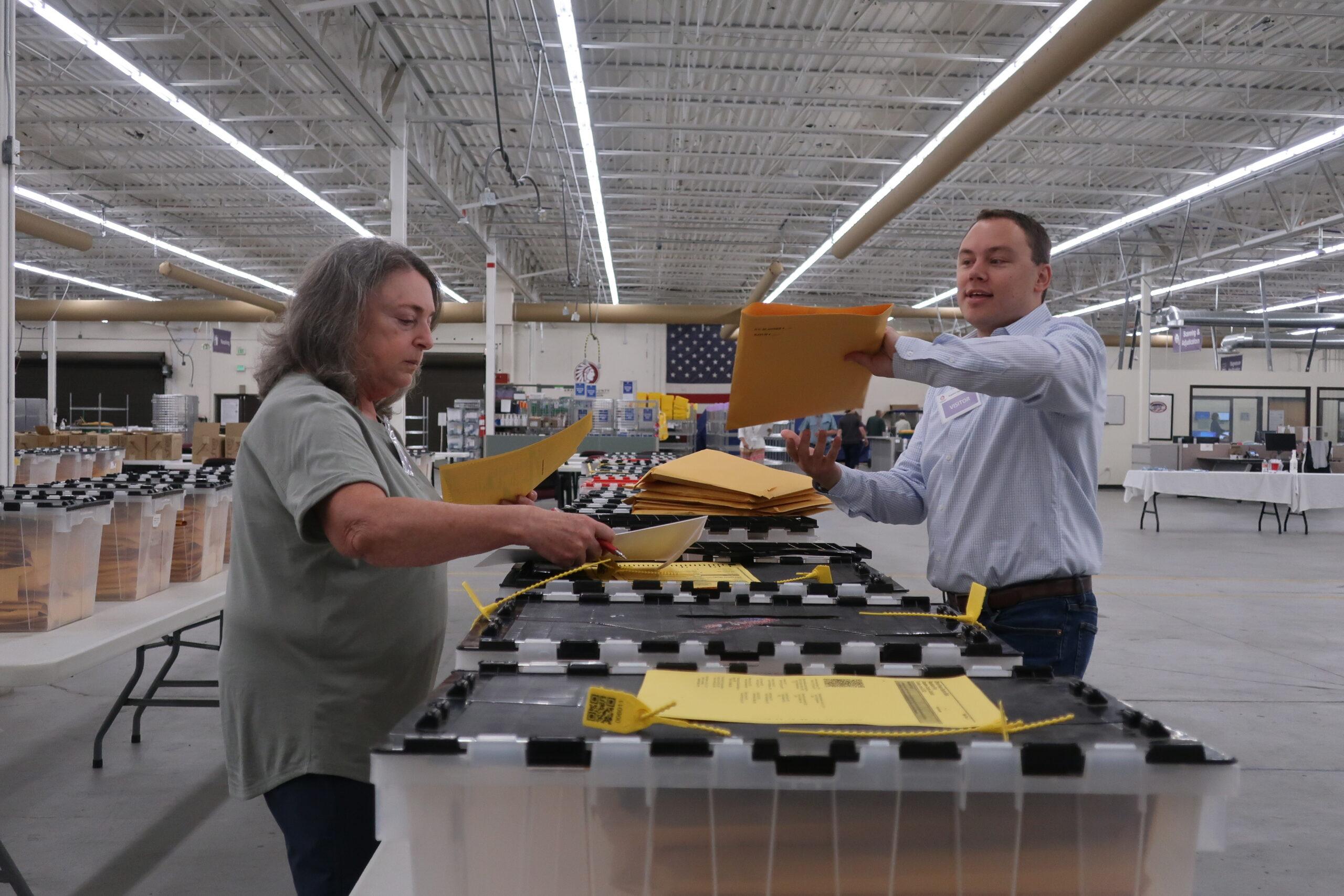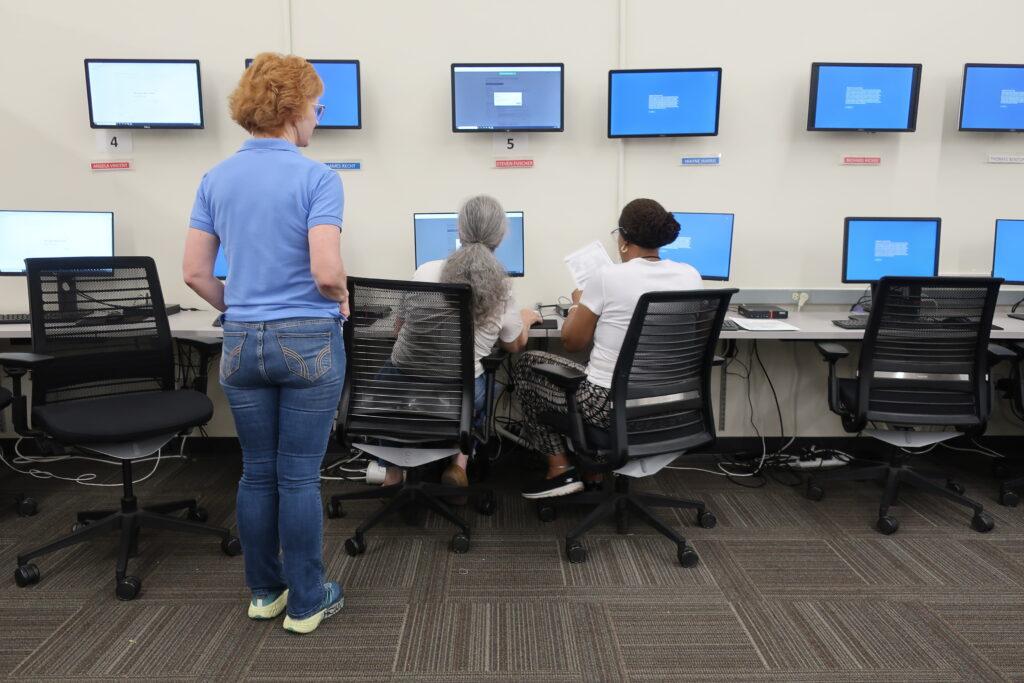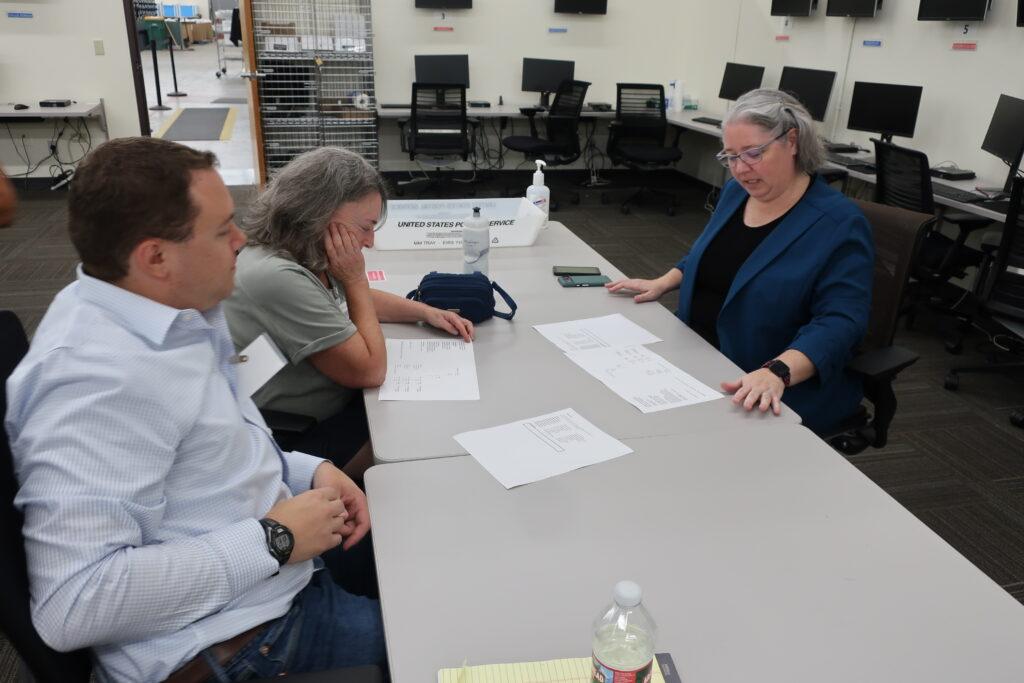
The process of verifying Colorado’s 2022 primary election results kicked off this week with the rolling of a 10-sided die.
Officials with the Secretary of State’s office used 20 separate dice on Monday to generate a random sequence of numbers, or “seeds,” to determine which ballots from the June 28 primary must be double and, in some cases, triple checked by counties.
Those designations are the first step of what’s known as a risk-limiting audit — a process that happens every election before results get certified. The procedure uses software to compare votes from a selected group of paper ballots against the votes recorded by each county’s electronic tabulation machines.
Counties must report initial results to the state by the end of the day Wednesday. If a large enough number of discrepancies are found, a second random audit is triggered.
“As long as both the ballots and the votes match up, we know that overall the winners are the winners and the losers are the losers,” said Peg Perl, deputy director of elections for Arapahoe County, which wrapped up the first round of its audit Tuesday.
Colorado was the first state to require this type of audit after lawmakers passed an election security law in 2009. The first risk limiting audit was held after the November 2017 general election due to delays in developing the technology.
Now, more than a dozen states either require audits or are testing them in pilot programs to help ensure election accuracy.

Many counties record and even live stream the process online to help reassure the public that their community’s election results are accurate.
“This is a really an important part of our process that shows that nothing vanishes into a black hole during the election,” Perl said. “We keep all the paper ballots and we can double check them one by one.”
In each county’s audit, bipartisan teams of judges work together to pull the random sample of paper ballots. Then the teams enter the votes into a portal on the Secretary of State’s website, which cross-verifies them with the ballot markings it has on file.
The software then spits out a report of any discrepancies.
If no discrepancies are found, that’s a sign that there’s a high level of statistical confidence that the original ballot count was accurate. If a large enough number of errors are found, audit workers must pull more ballots to ensure the “risk limit” of the election being miscounted is small enough.
In Colorado’s case, the risk limit is about 3 percent. If additional auditing finds more errors, the process triggers a full recount.
That’s never happened, though, according to the Secretary of State’s office.
“The department has never found a single instance of the tabulation equipment not operating correctly when conducting the RLA,” a spokeswoman wrote in an email.

Isolated errors do pop up sometimes, however. In the case of Arapahoe County’s audit this week, the software found one discrepancy out of 145 ballots.
The ballot in question was one where a voter had filled in the bubble of one uncontested race, but then crossed out both the candidate’s name and the filled-in bubble with two big “x’s.”
Below the cross-outs, they drew an arrow to another bubble for a different race.
“You can take a pretty good guess that the voter said, ‘I do not want this choice,’” Perl said, examining the ballot along with a bipartisan team of judges. “My guess is the (audit) team probably marked it as a choice.”
The discrepancy was likely due to human error, and not an issue with the county’s tabulation machines, Perl said.
“In the actual election, this ballot would have gone to adjudication and a bipartisan team would've made a decision based on the state voter intent guide to not count that,” Perl explained. “Then today, when a different team looked at the same ballot using voter intent guidance, they would make a decision as well. So those two decisions just didn't match. And that's the discrepancy we have right here.”
Ultimately, the one mix-up was not enough to trigger another audit of Arapahoe’s election results.
After they reviewed the discrepancy, Perl and representatives from local Republican and Democratic canvas boards signed off on the audit’s findings.
Results from all counties’ audits will start getting posted on the Secretary of State’s website this week. State officials will also review any discrepancies found during the audit.
The deadline for counties to submit their final results to the state is July 19.









